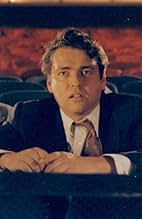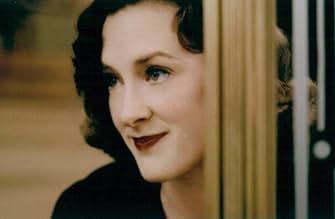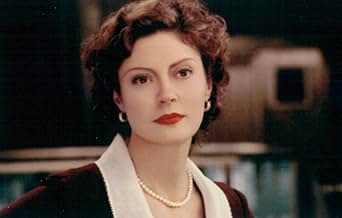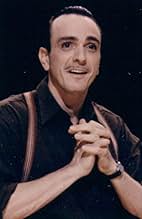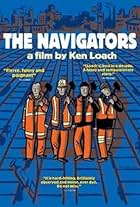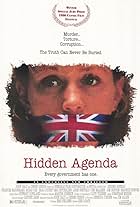IMDb RATING
6.8/10
9.6K
YOUR RATING
A true story of politics and art in the 1930s U.S., focusing on a leftist musical drama and attempts to stop its production.A true story of politics and art in the 1930s U.S., focusing on a leftist musical drama and attempts to stop its production.A true story of politics and art in the 1930s U.S., focusing on a leftist musical drama and attempts to stop its production.
- Awards
- 5 wins & 7 nominations
- Director
- Writer
- All cast & crew
- Production, box office & more at IMDbPro
Storyline
Did you know
- TriviaThis film is based on actual events, though it takes liberties with the details. Marc Blitzstein's 1937 anti-capitalist operetta 'The Cradle Will Rock', about the effort to unionize steelworkers, was originally produced as part of the Federal Theatre Project. The Federal Theatre Project (1935-1939), in turn, was part of the Works Progress Administration (WPA), which was created in 1935 by President Franklin D. Roosevelt to employ people during the Great Depression. Directed by Orson Welles and produced by John Houseman, Cradle was shut down right before it was due to open because of "budget cuts" at the FTP. Everyone involved believed the government deliberately cut funding because the play's message offended its more conservative contingent; Actor's Equity prohibited its members from taking part, apparently oblivious to the fact that Cradle was a pro-union piece and Actor's Equity was - and is - a union. Welles, Housman and Blitzstein spontaneously rented another theater and planned to put on Cradle with Blitzstein himself singing/reading the piece; the show sold out and various actors defied Equity and performed their parts from the seats they'd bought. The secondary plot which involved Mexican painter Diego Rivera butting heads with Nelson Rockefeller when the mural the latter commissioned for a Rockefeller Center lobby on the high-minded subject of "human intelligence in control of the forces of nature" included a portrait of Lenin, is also based on fact, though it happened in 1933. The incident is also dramatized in the 2002 film Frida (2002). Tim Robbins included it because it tied into the theme of artistic integrity vs. economic practicality.
- GoofsDiego Rivera's mural in Rockefeller Center was destroyed in February of 1934. The unauthorized performance of "The Cradle Will Rock" took place on 16 June 1937. Hallie Flanagan testified before Congressman Dies' committee on 6 December 1938. For artistic effect, the film makes it seem that the three events occur simultaneously.
- Quotes
Orson Welles: No one should be afraid of an idea!
- Crazy creditsThere is a heart in the credit roll with the following initials inside; SS, EMLA, JHR & MGR (SS is likely 'Susan Sarandon,' EMLA for Sarandon's daughter Eva Amurri, JHR & MGR for Robbins' & Sarandon's sons Jack Henry & Miles Robbins).
- SoundtracksLet's Do Something
Written by Marc Blitzstein
Performed by Erin Hill and Daniel Jenkins (as Dan Jenkins)
Courtesy of RCA Records
Featured review
Tim Robbins is a good actor. Not great, but it is clear in his acting that he has a passion for the theater. Now he has written and directed something that elevates him to world class.
The simple first: Tim has learned from Altman how to make a camera move in such a way that the viewer becomes part of the action. Some of his long, multithreaded action shots are breathtaking. More, this is used to tie together dual threads and multiple stories. Altman again, but even Altman is inconsistent in this.
But Tim can do something Altman cannot. He tunes this ensemble so tightly it seems that they are siblings. Many individual performances deeply charm, reach high.
That alone makes this a must see. But there's more. This is yet another play about a play, a common enough genre that has a very specific set of pitfalls. Robbins the writer cleverly avoids this with a facile trick. Uncareful viewers will see this as a simple, left-leaning story about artistic McCarthyism (Jesse Helms anyone?). But that is a ruse. The story is just the excuse.
Watch it again and look for why the play couldn't be put on. It was the unions, as much coopted by the system as Rockefeller that was the real threat and who the players defy at the end. This ahistorical fact was inserted for a reason.
Also watch for how the whole thing is nested in Faust, with a deeper recursive level with the players as the puppets in Faust. The puppet thing is worked a few other ways with Murray of course, but also so many others until we feel that the only non-puppets are the actors.
I think this is one of those cases where Robbins exceeded his own intellect, but it still works as a deeply recursive self examination, even of itself, because he trusted his instincts as dramatist (and presumably the actors' instincts as well).
I rate this high for intelligence. It achieves what Altman has not. Some seem to object that some of the characters are silly: Wells and Houseman and the Countess. But this is deliberate. They are playing players IN A PLAY. That's the point. Perhaps it would have been better to not use historical names since it confuses people who might look for accuracy.
Some misgivings though. Sarandon's performance was the weakest. Cinematically, the crushing of the mural during the performance was blunt editing. The pacing was off -- it should have been better integrated with the pacing of the play's action. The transposition of the dummy to modern Broadway was radically less subtle than the dummy theme's life in the rest of the play. If you didn't tease it out early, you'd be confused.
The simple first: Tim has learned from Altman how to make a camera move in such a way that the viewer becomes part of the action. Some of his long, multithreaded action shots are breathtaking. More, this is used to tie together dual threads and multiple stories. Altman again, but even Altman is inconsistent in this.
But Tim can do something Altman cannot. He tunes this ensemble so tightly it seems that they are siblings. Many individual performances deeply charm, reach high.
That alone makes this a must see. But there's more. This is yet another play about a play, a common enough genre that has a very specific set of pitfalls. Robbins the writer cleverly avoids this with a facile trick. Uncareful viewers will see this as a simple, left-leaning story about artistic McCarthyism (Jesse Helms anyone?). But that is a ruse. The story is just the excuse.
Watch it again and look for why the play couldn't be put on. It was the unions, as much coopted by the system as Rockefeller that was the real threat and who the players defy at the end. This ahistorical fact was inserted for a reason.
Also watch for how the whole thing is nested in Faust, with a deeper recursive level with the players as the puppets in Faust. The puppet thing is worked a few other ways with Murray of course, but also so many others until we feel that the only non-puppets are the actors.
I think this is one of those cases where Robbins exceeded his own intellect, but it still works as a deeply recursive self examination, even of itself, because he trusted his instincts as dramatist (and presumably the actors' instincts as well).
I rate this high for intelligence. It achieves what Altman has not. Some seem to object that some of the characters are silly: Wells and Houseman and the Countess. But this is deliberate. They are playing players IN A PLAY. That's the point. Perhaps it would have been better to not use historical names since it confuses people who might look for accuracy.
Some misgivings though. Sarandon's performance was the weakest. Cinematically, the crushing of the mural during the performance was blunt editing. The pacing was off -- it should have been better integrated with the pacing of the play's action. The transposition of the dummy to modern Broadway was radically less subtle than the dummy theme's life in the rest of the play. If you didn't tease it out early, you'd be confused.
- How long is Cradle Will Rock?Powered by Alexa
Details
- Release date
- Country of origin
- Official site
- Languages
- Also known as
- Ve Beşik Sallanacak
- Filming locations
- Production companies
- See more company credits at IMDbPro
Box office
- Budget
- $36,000,000 (estimated)
- Gross US & Canada
- $2,903,404
- Opening weekend US & Canada
- $93,998
- Dec 12, 1999
- Gross worldwide
- $2,986,932
- Runtime2 hours 12 minutes
- Color
- Sound mix
- Aspect ratio
- 2.35 : 1
Contribute to this page
Suggest an edit or add missing content




